“Remember when the Norton’s Point Lighthouse was built? Several times I was down there and climbed to the top of the unfinished structure. What a wilderness of sand dunes the point was at that time. With a friend I used to go often to the Coney Island beach in winter and dig clams, which were large ln size but made good chowder.” –P. B. STOUT, You Must Remember This, 1941.
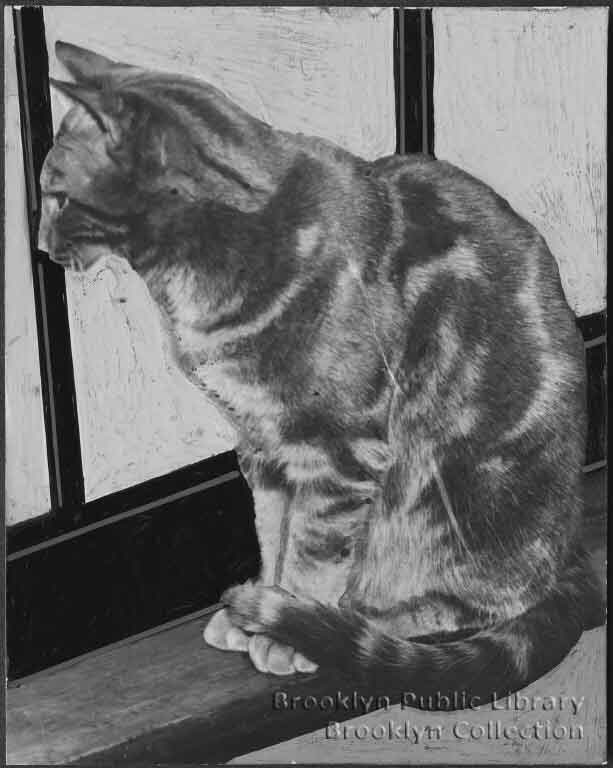
In the late 1920s, Tommy Mulligan was a famous U.K. boxer best known for being brutally knocked out by world middleweight champion Mickey Walker of Elizabeth, New Jersey.
Tommy Mulligan was also the name given to a seafaring cat that was washed ashore at Norton’s Point on the western beach of Coney Island in 1933. Although banged up and bruised, this Tommy was a real fighter who didn’t get knocked down.
Tommy Adopts the Lighthouse Keeper
Tommy was a feline sailor’s mascot who apparently fell from the deck of a passing ship sometime around 1993. Herbert Greenwood, the resident lighthouse keeper on the western point of Coney Island, found the cat almost drowned on the beach at Norton’s Point. He dried him out with towels and fed him a saucer of warm milk.
As the old saying goes, the best way to a man’s heart is through his stomach — the same applies to cats.
Warm and dry, with a belly full of milk, Tommy knew he had found his forever land-based home. The handsome but sober cat adopted the 50-year-old Herbert and his wife, Agnes, and settled in for good at the lighthouse.
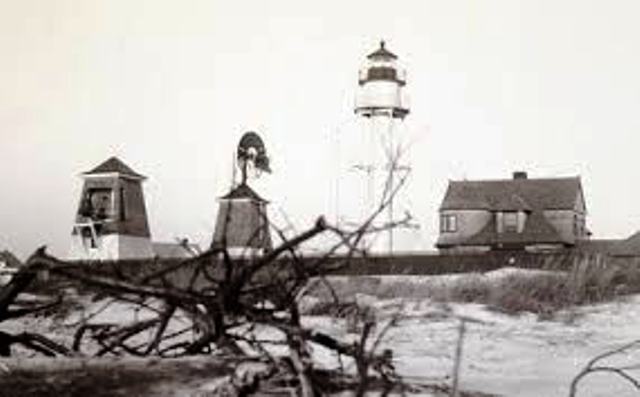
A Brief History of Norton’s Point
Before I tell you more about Tommy and the lighthouse, I want to provide some background on Norton’s Point, which is today occupied by the gated community of Sea Gate. Although a lot has been written on the history of Coney Island, I came across some erroneous information about Norton’s Point in numerous books and articles that I want to clarify.
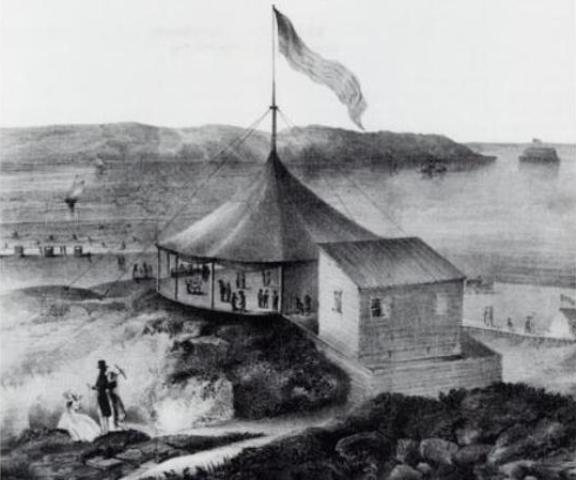
Until about 1874, Coney Island was mostly described as “a barren and repulsive waste of sand.” Save for the Coney Island House on the eastern end of the island, which was constructed by the Coney Island Road and Bridge Company to generate toll revenue on their Shell Road, the majority of the island was seldom visited other than by fishermen and clam diggers, and its sand and surf were little enjoyed.
Tourist development in the western part of the island began in the summer of 1845 when Alonzo Reed, the proprietor of the Fort Hamilton House, and Captain Thomas Bielby, the proprietor of the Coney Island and Fort Hamilton Ferry Company, opened a dance pavilion on what was then called Coney Island Point.
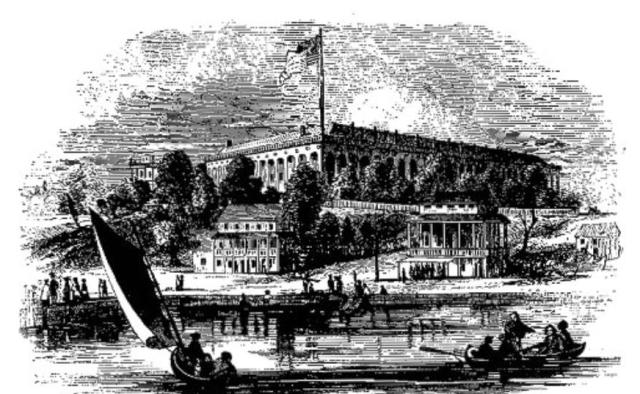
The Coney Island Pavilion was simply a circular wooden dance platform topped with a tent of sails and perched on a tall sand dune. A long platform connected the pavilion to a pier in the Gravesend Bay. When it opened in July 1845, the only other major structures on the entire island were the Coney Island House and Wyckoff’s Hotel, and the Van Sicklen and Voorhies farmhouses (both near today’s Neptune Avenue and W. 3rd Street).
Their intention was to attract families and day-trippers who wanted to get away from the city for a few hours to have a picnic, dance a few waltzes in the sea breeze, chow down on chowder and clams, and enjoy the fresh air. Bath houses were later added for those who wanted to swim, and sportsmen were encouraged to bring their guns if they wanted to hunt for sand-birds.
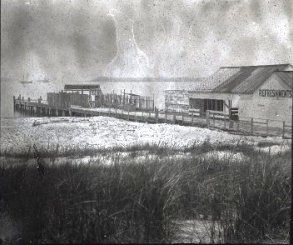
Unfortunately, the ferries mostly attracted the worst classes of people, including gamblers, ruffians, and prostitutes, giving the West End a very bad reputation that lasted for decades.
The Era of Mike “Thunderbolt” Norton
In the mid-1800s, the crowds at “the Point” were greater than any other part of the island. Between 2,000 and 3,000 bathers came daily to the West End beach, which was said to be unsurpassed with its extensive view of the ocean and the Narrows.
Enter Mike “Thunderbolt” Norton.
Before getting in tight with Tammany’s William Marcy “Boss” Tweed, Mike Norton had served as a captain in the 25th Regiment in the Civil War, a New York City alderman in 1864, and, at the age of 28, a state senator in 1867. He was indicted with Tweed in 1872, arrested in 1873, and, after jumping bail, turned state’s evidence in 1874.
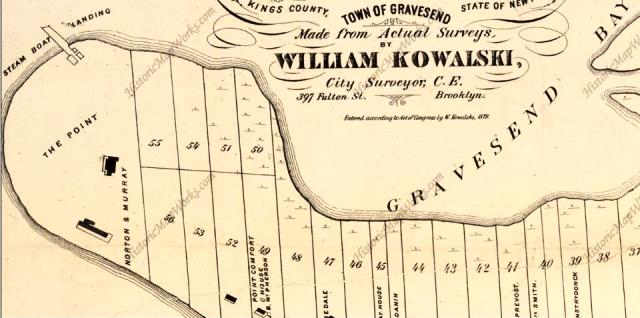
The story is more complicated, but in a nutshell, Norton and his partner James Murray used some of the Tammany loot to buy the lease on the Coney Island Point and refurbish the old pavilion and bath houses. They also erected the Point Comfort House and additional bathing pavilions and facilities for dining and drinking.
Norton and Murray’s Pavilion was located about a quarter of a mile southeast of the old steamboat pier, and was reached by a wide plank walk. The pavilion comprised three buildings, the largest containing about 700 bath houses. The center building was the pavilion proper, and contained a bar and restaurant. The third building was a small shanty bearing the sign “Coney Island Stock Exchange,” which contained an office of the Western Union Telegraph Company and tables for picnics.
In 1874, the Atlantic Monthly described Norton & Murray’s Pavilion as “a large, windy frame building that has weathered the storms of the coast for many a year. Every pore in its planks, every joint, every crack, is thoroughly saturated with sand…here, of all places, that the sandwich appears to be most truthfully denoted by its time-honored name.”
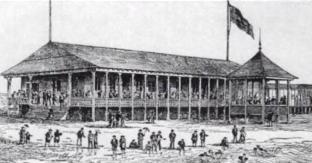
James J. Sangunitto, the Original Light Keeper
There is a lot more to the history and corrupt politics of Norton’s Point — especially around the formation of the exclusive gated community of Sea Gate — but this started out as a story about the Coney Island Lighthouse, so I’ll get back on point, no pun intended, with a story rarely told about this lighthouse.
James J. Sangunitto was born in Genoa, Italy in 1838. He arrived in the United States as an infant, and at the age of 19, moved to Coney Island with his father. He married Sarah Mann and had six children: James, Albert, Mabel, Leon, Robert, and Richard.
For many years, James was the keeper of the makeshift Norton’s Point light. Every night, he would set up two oil lamps on poles to warn the vessels. On a number of occasions, he and his wife helped survivors of vessels that had foundered on the Coney Island shores. During the day, he and Sarah operated a tintype photography studio called Mammoth Photograph Gallery on Surf Avenue opposite the Sea Beach Palace and railroad depot (Sarah was reportedly credited for introducing tintype studios to Coney Island, having purchased the invention from Adolphe-Alexandre Martin of France).
The Street Cleaning Department eventually installed a more permanent light on Norton’s Point to protects its garbage tug boats, but newspaper accounts say James’ actions did help prevent many wrecks. When the new lighthouse was constructed in 1890, James worked there as a watchman.
When James died in 1936 at his home at 2817 West 1st Street (now the site of a JASA retirement community near West Avenue) he was Coney Island’s oldest resident.
Congress Establishes a Lighthouse at Coney Island
In February 1889, J.O., Coleman, Commissioner of Street Cleaning, sent a letter to all New York and Brooklyn representatives in Congress asking them to pass House Bill 11,527 of 1888, “to establish lights on the western end of Coney Island.”
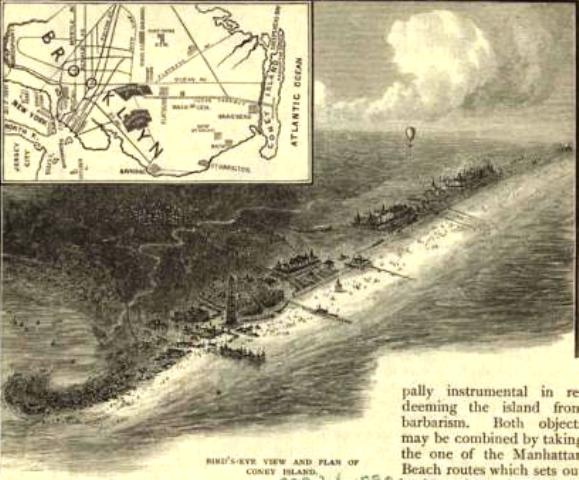
In the letter, Coleman talked about all the boats that navigated the narrow channel around the western point, including the excursion steamers and the garbage tug boats. He said his department had been maintaining a light on the point for some time, but it was just a makeshift light.
In 1889, Congress approved $25,000 to build two range lights at Norton’s Point; however, when the Lighthouse Board tried to buy the necessary land, the property owners asked for twice the estimated value of the land. No problem; the property was condemned and obtained for $3,500.
Work on the tower, a separate front beacon, the fog bell tower, and the keeper’s dwelling began in March 1890. The tower was designed as a square, skeleton tower with 87 steps to the eight-sided lantern room.
The simple two-story dwelling had a cellar and an attic and an attached shed; a gravel path led to the shoreline. In 1896, the front tower was removed and taken to Staten Island, and the land it stood on was sold at public auction.
Lighthouse Keeper Greenwood
In 1933, when Tommy Mulligan washed ashore at Norton’s Point, Herbert Greenwood had been living at the lighthouse for 15 years. Herbert was the fourth head keeper of the lighthouse, following Thomas Higginbotham (1890 – 1910), Ernest J. Larsson (1910), and Gilbert L. Rulon (1910 – 1918). Born in Rhode Island on May 6, 1882, Herbert grew up in New London, Connecticut and joined the Coast Guard in 1900. He married Agnes Snow in 1910 and the couple took over the Coney Island lighthouse in 1918.
For 27 years, Herbert tended to his lighthouse duties, climbing the 87 steps to fill the oil lamp and clean the giant reflectors every day (and then, when the lamp was replaced by a 500-watt bulb in 1936, cleaning the six revolving lenses and red screen and oiling the mechanism that turned the lenses on a regular basis).
He took his job very seriously, knowing that the lighthouse helped mariners get their bearing on Norton’s Point.
Although Herbert and Agnes led a fairly secluded life, they still got their mail delivered twice a day (back then the postman always rang twice) and had access to three major rapid transit lines. They also had some exciting times, like the night in 1928 when they rowed out in their boat to rescue two naval prisoners that had escaped the army transport U.S.E. Grant.
After retiring in 1941, Herbert and Agnes returned to New Haven, where Herbert died in July 1975.

Thirty-seven years later, Hurricane Sandy ripped through the eastern seaboard, doing considerable damage to New York’s coastal communities. Only a few months ago, the Coney Island Lighthouse was still surrounded by rubble from the storm that had been pushed ashore by the sea. Many of the 750 homes that were damaged are still boarded up, and the bulkhead that once safeguarded Sea Gate has been completely destroyed.
Some say that if another hurricane of Sandy’s magnitude were to strike again, the entire island could be totally destroyed by the sea. Even a fighter-cat like Tommy Mulligan wouldn’t be able to survive that.



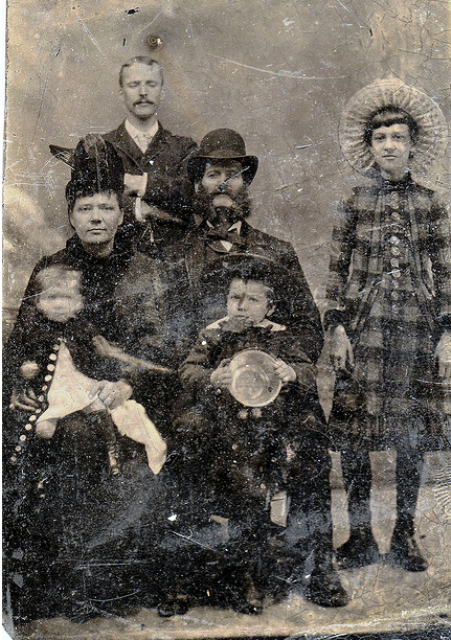

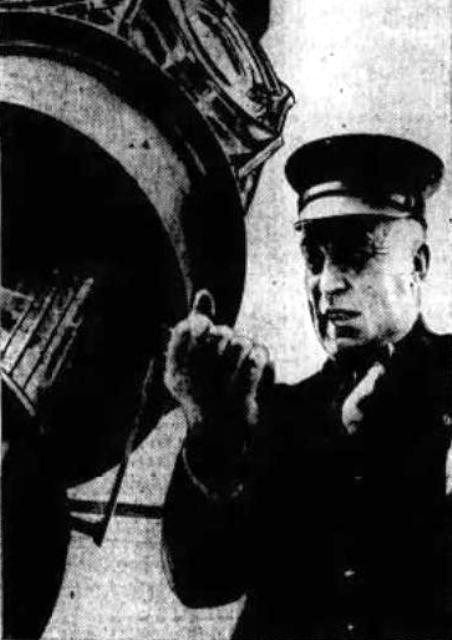


Thank you for this wonderful story! My family lived at the Coney Island Lighthouse from 1960 through 2003 and although we mainly had dogs, I think Tommy would definitely have been a welcome part of our family.
I’m so glad you enjoyed it! And how fun it must have been for you and your family to live at the lighthouse (at least, it looks like it would have been fun, but I’m sure it was challenging also.) Tommy was definitely a cool cat!
So glad you enjoyed the story of Tommy — I”ll keep my eye out for your upcoming book!
Interesting piece you have on old Coney Island. I spent many adventure filled days in Sea Gate in the 1960’s that I write about in my new book “Roller-Coaster Kid’s, tales of 1960’s Coney Island” due out sometime in 2017. I have very fond memories of the place.
Thanks for the early account of the Norton Point light. Most articles just include the history after the lighthouse was built and leave out my great great grandfather and his family’s contributions.
I’m glad you enjoyed the story, Janice. I always love to hear from readers who discover and ancestor in one of my posts. By the way, I’m currently working on a book, and there’s a good chance your great great grandfather’s story will be in it.
My parents, Harvey & Edith Laikin moved to 4620 Beach 46th St. in 9/65 which was next to the lighthouse and stayed there until 1971 when we moved to 3840 Atlantic Ave. I went to PS 188, Mark Twain JHS & John Dewey HS before going to SUNY@Plattsburgh and moving to VT where I’ve lived since graduating from Plattsburgh.
How cool! Thank you for reading and responding. My very first boyfriend (freshmen in college) graduated from SUNY Plattsburgh as did my cousin Bill. I got to visit there one time — very cold!